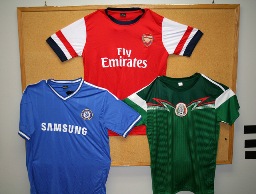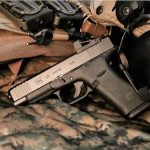Wearing apparel and accessories again topped the listed of most seized counterfeit commodities in 2014, according to U.S. Customs and Border Protection (CBP) and U.S. Immigration and Customs Enforcement’s Homeland Security Investigations (HSI).
In fiscal year 2014, there were 23,140 intellectual property rights seizures with an estimated manufacturer’s suggested retail price or MSRP of $1.2 billion, the value of the goods had they been genuine. In addition, 144 shipments of circumvention devices were seized for violation of the Digital Millennium Copyright Act. CBP also enforced 44 exclusion orders in fiscal year 2014. Since 2007, CBP has identified intellectual property rights enforcement as a priority trade mission. Although IPR seizures declined slightly in 2014 from 2013, CBP recorded its third busiest year for seizures since 2005.
The top ten counterfeit commodities seized were:
- Wearing apparel/accessories
- Consumer electronics
- Pharmaceuticals/personal care
- Handbags/wallets
- Footwear
- Watches/jewelry
- Optical media
- Computers/accessories
- Labels/tags
- Toys
 |
| Counterfeit soccer club apparel with an estimated MSRP of $1,016,3990 seized by CBP officers in April 2014. |
Wearing apparel and accessories continue to be the number one commodity classification based on number of seizures with 7,922 seizures or 28 percent. Watches and jewelry are the largest commodity classification by value with an estimated MSRP of $375 million or 31 percent.
The People’s Republic of China remains the primary source economy for counterfeit and pirated goods seized with a total value of $772 million, representing 63 percent of all IPR seizures by MSRP. Hong Kong ranks second with $310 million or 25 percent.
Tactical interagency collaboration with the HSI-led National Intellectual Property Rights Coordination Center (IPR Center) resulted in 683 arrests, with 454 indictments and 461 convictions.
The National IPR Center is one of the U.S. government's key weapons in the fight against criminal counterfeiting and piracy. Working in close coordination with the Department of Justice Task Force on Intellectual Property, the IPR Center harnesses the tactical expertise of its 23 member agencies to share information, develop initiatives, coordinate enforcement actions and conduct investigations related to intellectual property theft. Through this strategic interagency partnership, the IPR Center protects the public's health and safety and the U.S. economy.
CBP and HSI protect businesses and consumers every day through an aggressive IPR enforcement program. CBP targets and seizes imports of counterfeit and pirated goods, and enforces exclusion orders on patent-infringing and other IPR violative goods.















